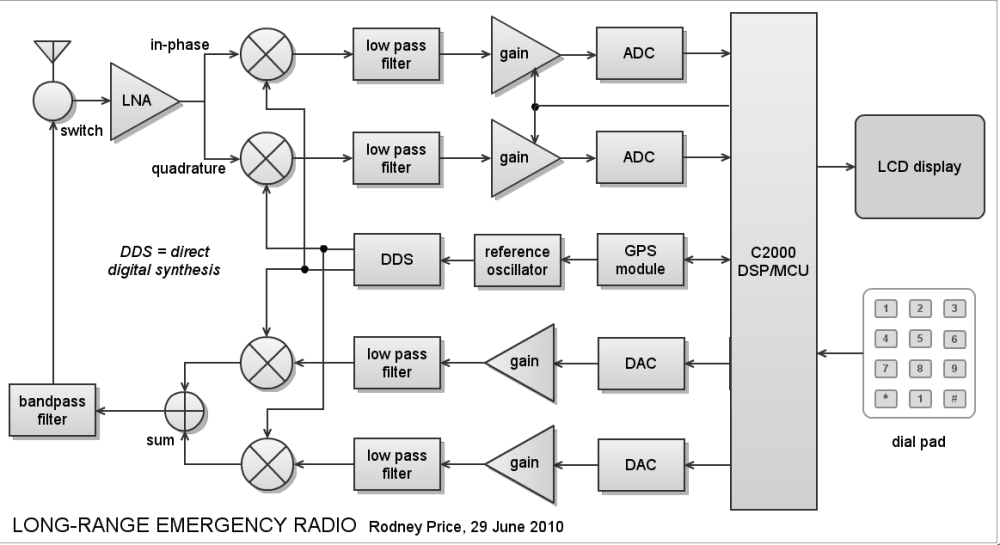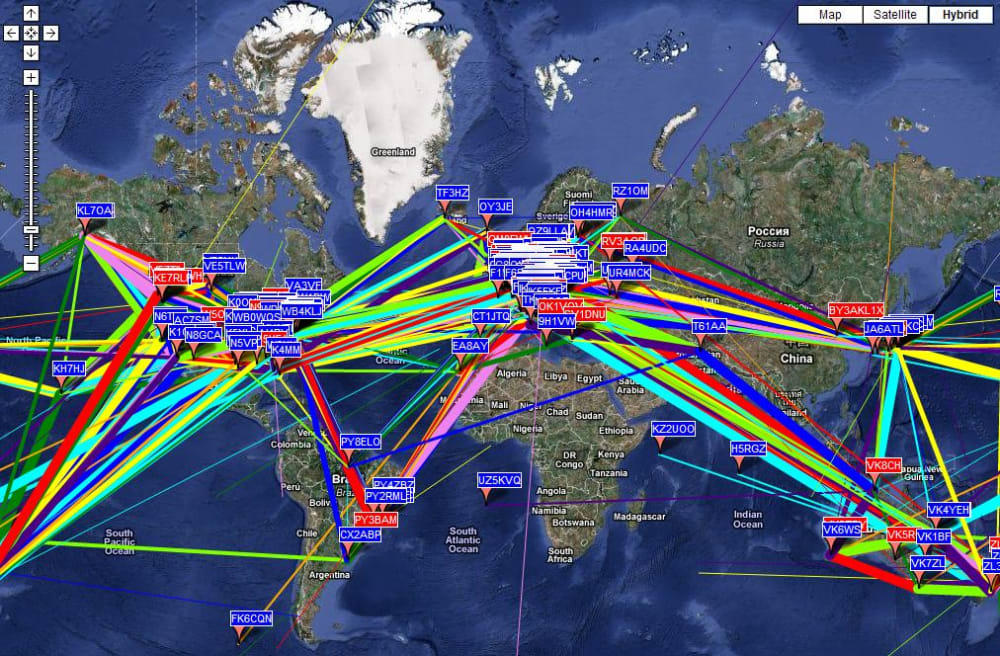Recent earthquakes in Haiti and Chile, and the tsunami in Indonesia, destroyed local energy and communications infrastructure. Friends and family were often unable to contact loved ones for days or weeks. My entry allows people affected by a disaster to make contact within hours, sending their precise location and a tweet -- a few words of text -- even when cell phones and landlines are down. Contacts can be made over thousands of miles.
My entry consists of a two-way radio, powered by three D-cell batteries, with a dial pad and LCD readout. A user keys in a text message. The radio then takes about an hour to send the message, along with a GPS-derived location. Receiving works similarly.
Ham radio enthusiasts have been making thousand-mile contacts for years, albeit usually with expensive equipment and large fixed antennas. One of the attached illustrations shows how: they operate at frequencies between 3 and 30 MHz, where radio waves reflect from the ionosphere. Often two, three, or more reflections can be used. This is sometimes called skywave propagation.
In the past few years, however, a group of hams have begun to send digital messages thousands of miles by skywave using less power than a flashlight. In return for long range, they accept very low transmission rates. One popular mode, WSPR, uses bandwidths of only about 1 Hz. WSPR uses sophisticated digital modulation with strong forward error correction to further increase range. Sending about 70 bits requires ten minutes.
I've attached a second illustration, a map of the Earth showing an hour's WSPR activity on a particularly busy day. (You can see current activity at http://wsprnet.org.) Successful trans-Atlantic and trans-Pacific contacts are common, as well as Australia to Europe contacts.
The third illustration is a block diagram of the radio. It is a fairly standard software-defined radio design, with a direct-conversion receiver and a simple 5 watt transmitter. Operating at tens of MHz simplifies the design requirements considerably, and the extremely low data rates reduce computing resource requirements dramatically. The design uses an off-the-shelf Texas Instruments DSP/MCU, a C2000-series chip, as opposed to more conventional high-performance FPGA designs. When manufactured in quantities of thousands, the radio's cost might be kept as low as $60.
WSPR and similar modes require frequency accuracy on the order of 0.1 ppm for success. Accuracies like this are available worldwide through GPS. The radio incorporates a standard GPS module and antenna, which serves two purposes. First, the GPS module determines the radio's position. Second, it provides very accurate timing information, which is used both to discipline a reference oscillator, and to synchronize the digital modulation itself.
The antenna can be a simple wire antenna draped across a tree or hung from a window. More compact active antennas are also possible.
In our modern world, people have family and friends scattered all over the earth. Using this emergency radio, they can use these connections to reassure others that they are safe, or call for help if needed.
Like this entry?
-
About the Entrant
- Name:Rodney Price
- Type of entry:individual
- Hardware used for this entry:LTSpice, EagleCAD
- Patent status:none





